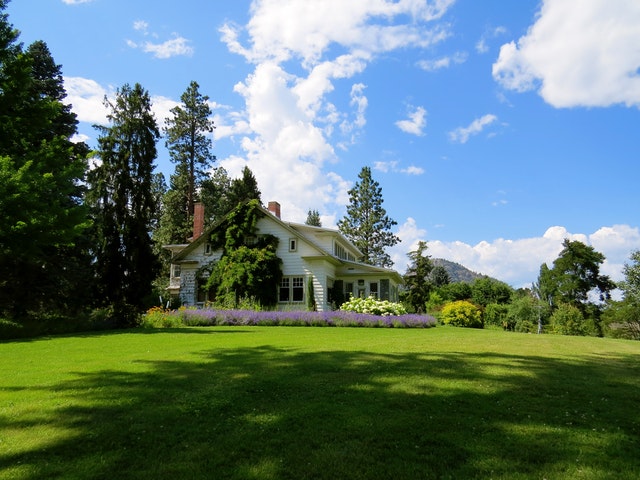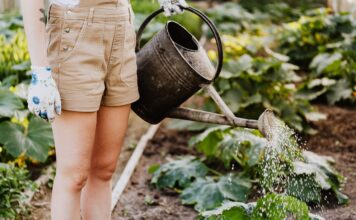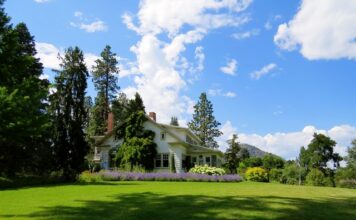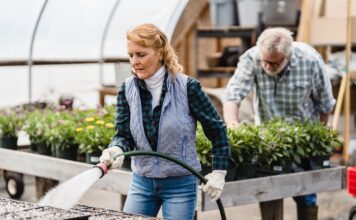In this comprehensive guide to landscaping, readers will learn about the importance of a well-designed landscape, which offers numerous benefits including environmental, aesthetic, property value, and functional outdoor space improvements. The article delves into the fundamentals of landscape design, touching on topics like determining the purpose, site assessment, climate considerations, and proper plant and hardscape element selection. Different landscaping styles are also discussed, offering options like formal, informal, modern, Mediterranean, Japanese, xeriscaping, and native plant landscaping. Landscape components, such as softscape and hardscape elements, are explored as well as the creation of outdoor living spaces like outdoor kitchens, fireplaces, pergolas, and seating areas. Finally, the article covers essential landscaping maintenance practices to keep your landscape beautiful and healthy.
The Importance of Landscaping
Landscaping plays a vital role in creating a harmonious and balanced environment. It is not just about enhancing the appearance of your property but also significantly contributes to the overall wellbeing of individuals and communities. The importance of landscaping can be explored through various aspects, such as its environmental benefits, aesthetic appeal, increased property value, and the creation of functional outdoor spaces.
Environmental benefits
Landscaping provides numerous environmental benefits, which are crucial for maintaining a healthy ecosystem. Some of the key advantages include:
- Climate control: Trees and plants serve as natural air conditioners, reducing surrounding air temperatures by releasing water vapor. This can result in significant energy savings during warm seasons, as shaded homes require less air conditioning.
- Erosion control: Well-designed landscaping prevents soil erosion, particularly on sloped properties. Retaining walls, groundcovers, and strategically planted vegetation work together to hold soil in place, reducing erosion due to wind or water. This protects property and waterways from contamination.
- Wildlife habitat: Landscapes provide small ecosystems that support various types of wildlife, from squirrels and rabbits to birds and butterflies. Including native plants in your landscaping efforts creates an environment in which these species can thrive.
- Carbon sequestration: Trees and plants absorb and store carbon dioxide, mitigating the impacts of climate change. A single mature tree can absorb up to 48 pounds of carbon dioxide per year, significantly contributing to the reduction of greenhouse gas emissions.
- Stormwater runoff reduction: Well-designed landscaping reduces stormwater runoff by allowing rainwater to be directed and absorbed into the ground. This process helps prevent flooding, erosion, and reduces pollutants from entering local water bodies.
Aesthetic appeal
Landscaping is an art form that involves the purposeful arrangement of natural and manmade elements to create visually pleasing environments. A well-designed landscape can transform a property’s outdoor space into a tranquil and visually appealing oasis. A beautifully landscaped area provides an inviting atmosphere and can prompt feelings of relaxation, peace, and happiness among those who enjoy it.
Moreover, studies have shown that appealing landscapes can positively influence perceptions of a neighborhood, leading to a greater sense of community pride and higher confidence in local institutions. The aesthetic value of landscaping should not be underestimated, as it significantly impacts our quality of life and overall well-being.
Increased property value
Investing in landscaping can have substantial financial benefits in the long run. An attractive and well-maintained landscape not only enhances the curb appeal of a home, but also increases its overall value. According to a report from the American Society of Landscape Architects, a well-designed landscape can add up to 12.7% to the value of a property.
Potential homebuyers are more likely to be drawn to a property with a pleasing and well-kept landscape, as it demonstrates the owner’s commitment to maintaining the entire property. Landscaping not only increases the market value of your property but also increases its desirability, making it stand out in competitive real estate markets.
Functional outdoor space
One of the primary objectives of landscaping is to create functional outdoor spaces that cater to the specific needs and desires of a property owner. Designers integrate elements such as patios, walkways, and seating areas to create usable spaces for relaxation and entertainment.
Additionally, landscaping can provide privacy and security by using plants and structures to create natural barriers between neighboring properties. From children’s play areas to serene retreats for adults, landscaping allows property owners to make the most out of their outdoor spaces and ultimately enhances their quality of life.
Fundamentals of Landscape Design
Understanding the goals and needs of a landscape design is the foundation for creating a beautiful and functional outdoor space. This includes assessing the site, considering climate and microclimate, choosing appropriate plants and hardscape elements, creating focal points and visual hierarchy, and planning for growth and maintenance. These fundamentals will guide the design process and ensure the finished product meets the desired expectations.
Understanding the purpose
Before diving into a landscape design, it’s essential to identify the primary purpose of the outdoor space. This may include creating a space for relaxation and entertainment, a play area for children, a productive vegetable garden or a simple, low-maintenance landscape that enhances the home’s curb appeal. By clearly defining the purpose, it becomes easier to make decisions about the various elements that will be incorporated into the design.
Consider the preferences and lifestyle of the individuals that will be using the space, as well as any specific requirements, such as accessibility or pet-friendliness. Creating a list of priorities will help ensure that the finished design serves the desired functions while addressing any unique needs.
Assessing the site
A thorough site analysis is essential in determining the best design solution for a specific property. This includes evaluating the existing conditions, such as sun exposure, soil type and quality, drainage patterns, and the presence of any existing plants or hardscape elements. It’s also essential to consider the topography, views into and out of the property, and any potential challenges or limitations that may impact the design, such as utility lines or restrictive property boundaries.
Additionally, it’s crucial to understand the legal and environmental regulations that may apply to the site. This could include building codes, zoning ordinances, or guidelines for environmentally sensitive areas, such as wetlands or steep slopes.
Considering climate and microclimate
The climate and microclimate of a site will have a significant impact on the success of a landscape design. Factors like temperature, precipitation, wind patterns and humidity all play a role in determining the types of plants that will thrive and the necessary irrigation and drainage considerations. Microclimates are smaller areas within a site that experience slightly different conditions, such as a sheltered corner that stays warmer or a low-lying area that collects water.
Understanding the climate and microclimates of a site will help guide plant selections and ensure the landscape design is adaptable and sustainable over time.
Choosing appropriate plants and hardscape elements
Selecting appropriate plants and hardscape elements for a landscape design involves careful consideration of the site’s conditions and the desired aesthetic and functional goals. Choose plants that will thrive in the site’s specific conditions and climate, taking into account factors like sun exposure, soil type and moisture levels. Also, consider each plant’s mature size, growth rate, and maintenance requirements.
Likewise, choose hardscape elements that complement the overall design style and serve the desired functions. Examples of hardscape elements include walkways, patios, retaining walls, and water features. Opt for materials that are both durable and environmentally friendly whenever possible.
Creating focal points and visual hierarchy
A well-designed landscape should have distinct focal points that draw the eye and create visual interest. Focal points can be created using a striking plant or tree, a statuary or art piece, or a prominent hardscape feature like a pergola or fountain. Arrange elements within the landscape design to create a hierarchy, leading the viewer’s eye through the space and providing a sense of balance and cohesion.
Incorporate elements of repetition and contrast to establish a sense of rhythm and harmony within the landscape. For example, repeating a specific plant or hardscape material can help tie the entire design together, while contrasting colors, textures, or patterns can create visually striking moments within the larger composition.
Planning for growth and maintenance
A successful landscape design must incorporate considerations for growth and maintenance, ensuring the long-term health and appeal of the space. This involves planning for proper plant spacing and accounting for each plant’s mature size, as well as providing ample access for regular maintenance tasks like pruning, weeding, and mowing.
Developing a maintenance plan that addresses the ongoing needs of the landscape, such as fertilization, pest control, and seasonal clean-up, will ensure that the design thrives and matures as intended. Additionally, incorporating sustainable practices like water-efficient irrigation systems or native plantings can help reduce the overall maintenance requirements and environmental impact of the landscape design.
Types of Landscaping Styles
Formal landscaping
Formal landscaping incorporates symmetry, clean lines, and simplicity to create a well-organized and visually appealing garden. This style is often seen in stately gardens and historical homes, featuring perfectly manicured lawns, geometric shapes, and defined borders. Some of the key traits of formal landscaping include allées (straight paths lined with trees), parterres (geometrically shaped flower beds), and topiaries.
This type of landscaping requires regular maintenance and pruning, highlighting structure over a natural appearance. Classic elements such as fountains, statues, and obelisks can also be incorporated, creating focal points within the design. Although formal landscaping may be considered more traditional, it can be adapted to suit any sized garden or property.
Informal landscaping
Informal landscaping favors a more organic, casual atmosphere, often incorporating flowing, curving lines and a greater variety of plants. This approach mimics the appearance of untamed natural landscapes and embraces imperfections. A cottage garden is a prime example of an informal style, featuring charming, colorful wildflowers and loosely arranged flower beds.
Key traits of informal landscaping include meandering paths, uneven borders, and a more naturalistic planting scheme, with a variety of native and exotic plants intermingled. This style allows for greater creativity and often focuses on biodiversity and wildlife-friendly planting. Informal landscaping may require a more hands-off approach to maintenance, promoting a naturally self-sustaining environment.
Modern landscaping
Modern landscaping is characterized by clean lines, sleek surfaces, and minimal ornamentation, often incorporating hardscaping materials like concrete, metal, and glass. This contemporary style focuses on the use of space and a limited color palette, creating a visually striking yet peaceful atmosphere.
Some of the key traits of modern landscaping include geometric shapes, large expanses of monochromatic materials, and minimalist planting schemes. This style often includes built-in seating, outdoor kitchen areas, and other functional elements that complement the clean aesthetic. Water features, sculptural elements, and lighting are also significant aspects of modern landscaping.
Mediterranean landscaping
Mediterranean landscaping is inspired by the warm, coastal regions surrounding the Mediterranean Sea, incorporating design elements from Spain, Italy, and Greece. This style relies on hardy, drought-tolerant plants like lavender, rosemary, and olive trees, as well as colorful flowers such as bougainvillea and geraniums.
Characteristic features of Mediterranean landscaping include rustic, textured surfaces like terracotta, natural stone, and pebble; shady courtyards and patios; and water features such as fountains or pools. Often informal in nature, Mediterranean gardens can include meandering paths, gravel or crushed rock surfaces, and partially enclosed spaces for privacy and relaxation.
Japanese landscaping
Japanese landscaping is deeply rooted in the principles of Zen Buddhism and the Japanese aesthetic concept of wabi-sabi, which emphasizes the beauty in imperfection and transience. The main goal of Japanese landscaping is to create a tranquil, harmonious space for meditation and reflection.
Key elements of Japanese landscaping include natural, organic shapes; flowing water features; stone lanterns; and moss, gravel, or sand as ground cover. Plantings are carefully selected, with an emphasis on evergreens, bamboo, and flowering trees like cherry or plum. Raked gravel or sand gardens, strategically placed boulders, and simple wooden structures like gates or bridges are also common features in Japanese-style landscapes.
Xeriscaping
Xeriscaping is a style of landscaping that focuses on water conservation, making it ideal for arid or drought-prone regions. This approach emphasizes the use of native, drought-tolerant plant species, strategic irrigation techniques, and efficient design practices that reduce water usage.
Key elements of xeriscaping include the use of indigenous plants, mulching, and grouping plants with similar watering needs together. Hardscaping features, such as permeable paving, may be used to reduce run-off and efficiently collect rainwater. Rock gardens and dry riverbeds are also common elements in xeriscaped landscapes.
Native plant landscaping
Native plant landscaping refers to the practice of designing and maintaining a garden or landscape exclusively, or primarily, with native plants. This environmentally friendly approach allows for a more sustainable and low-maintenance landscape, as native plants are better adapted to local climate conditions, pests, and wildlife.
This type of landscaping can be adapted to any style, from formal to informal, and often focuses on preserving existing ecosystems and encouraging biodiversity. Key features of native plant landscaping might include the use of local wildflowers, trees, grasses, and shrubs, as well as habitat enhancements such as nesting boxes, log piles, and ponds.
Landscape Components
Landscape components are the various elements that make up a well-designed outdoor space. They help create a functional, visually appealing, and harmonious environment that complements the architectural style of a building and blends with the natural surroundings. There are two primary categories of landscape components: softscape and hardscape elements.
Softscape Elements
Softscape elements are the living, organic components of a landscape. They include plants, groundcovers, lawns, and other vegetative features. They play a critical role in creating a peaceful, visually attractive, and environmentally friendly outdoor space.
Plants
Plants are the backbone of any landscape and serve multiple purposes, such as providing privacy, shade, color, and texture to an outdoor space. They can also act as focal points, define boundaries, and create natural habitats for birds and insects. When selecting plants for your landscape, consider factors like the climate, available space, maintenance requirements, and your personal preferences regarding aesthetics. Choose plants that are suitable for your region and can thrive in the existing conditions, such as the amount of sunlight and rainfall.
Groundcover
Groundcovers are low-growing plants that spread quickly to form a dense, uniform layer on the ground. They help retain moisture, reduce soil erosion, discourage weed growth, provide natural insulation, and create visual interest in the landscape. Groundcovers can be used as an alternative to lawns or as a complement to other plantings. Popular groundcover choices include creeping thyme, vinca minor, sedums, and ivy.
Lawns
A well-maintained lawn is a classic landscape feature that provides a lush, green, and welcoming environment for outdoor activities, such as picnics, play, and relaxation. A healthy lawn not only improves curb appeal but also supports the environment by producing oxygen, filtering pollutants, and providing a habitat for insects and wildlife. Lawns require regular maintenance, including mowing, fertilizing, watering, and weed control. Choose grass species that are appropriate for your climate, soil, and shade conditions.
Hardscape Elements
Hardscape elements are the non-living, built components of a landscape. They are typically made of materials such as stone, brick, concrete, wood, or metal, and serve functional and aesthetic purposes. Hardscape elements help define the structure of an outdoor space, create pathways, and offer seating and entertaining areas.
Paths and walkways
Paths and walkways are essential for guiding foot traffic and connecting different areas of a landscape. They can be made from a variety of materials, such as natural stone, pavers, gravel, or recycled materials. When designing pathways, consider safety, accessibility, and visual appeal. Provide adequate lighting, ensure even surfaces, and incorporate curves or patterns to create interest.
Patios and decks
Patios and decks are outdoor living spaces that extend a home’s living area and provide a comfortable area for relaxation, dining, and entertainment. Patios are typically built at ground level using materials like stone, concrete, or pavers, while decks are elevated structures made of wood, composite, or vinyl materials. When designing a patio or deck, consider factors such as size, location, privacy, and the style of your home.
Walls and fences
Walls and fences provide privacy, security, and structure to a landscape. They can be used to define boundaries, separate different areas, or create a backdrop for plantings. Choose materials and styles that complement the architecture of your home and the surrounding landscape. Consider adding decorative elements, such as lattice, lighting, or artwork, to enhance visual appeal.
Water features
Water features, such as ponds, fountains, and waterfalls, add a soothing and tranquil element to a landscape. They create a focal point, mask unwanted noise, and provide a natural habitat for aquatic plants and wildlife. When designing a water feature, consider factors like size, location, maintenance requirements, and safety.
Outdoor lighting
Outdoor lighting enhances the beauty, safety, and functionality of a landscape. It can highlight architectural features, illuminate paths and walkways, and create a warm, inviting atmosphere for outdoor living spaces. When planning your outdoor lighting, consider using energy-efficient options such as solar, LED, or low-voltage fixtures. Incorporate a mix of task, accent, and ambient lighting to create a balanced and visually appealing landscape.
Creating Outdoor Living Spaces
Outdoor living spaces are becoming increasingly popular as homeowners look for ways to extend their living space and enjoy the great outdoors. Creating an outdoor living area is an excellent investment, adding value to your property and providing additional space for entertainment and relaxation. This article discusses four popular types of outdoor living spaces, including outdoor kitchens, outdoor fireplaces and fire pits, pergolas and gazebos, and outdoor seating and dining areas, as well as tips for designing and outfitting these spaces.
Outdoor Kitchens
Outdoor kitchens are perfect for those who love to cook and entertain al fresco. They provide a functional and attractive space for preparing and cooking meals, allowing you to enjoy the outdoors while performing these tasks. When designing an outdoor kitchen, consider the following features:
- Countertops and cabinets: Outdoor countertops should be made of durable materials, such as stone or concrete, to withstand the elements. Cabinets should also be weather-resistant and provide ample storage space for your cooking utensils, dishes, and accessories.
- Appliances and equipment: Incorporate appliances and equipment that cater to your cooking style and preferences, such as grills, smokers, pizza ovens, and refrigerators. Make sure these appliances are suitable for outdoor use and are powered by a safe and efficient energy source, such as propane or natural gas.
- Lighting and ventilation: Ensure your outdoor kitchen has proper lighting and ventilation to enhance visibility and maintain a comfortable working environment. This could include task lighting, ambient lighting, and a ventilation hood to remove smoke and odors.
- Shelter and shade: Consider incorporating a pergola, awning, or umbrella to provide shelter and shade for your outdoor kitchen, protecting it from rain, sun, and other elements.
Outdoor Fireplaces and Fire Pits
Outdoor fireplaces and fire pits create a cozy ambiance and are perfect gathering spots for friends and family. These features provide warmth, light, and a focal point for your outdoor living area. Consider the following when designing an outdoor fireplace or fire pit:
- Location and spacing: Choose a suitable location for your fireplace or fire pit, ensuring it is at a safe distance from your home and any flammable materials. It should also be positioned in a way that complements your outdoor living area, providing ample seating space for guests.
- Material and design: Choose a durable material for your fireplace or fire pit, such as stone, brick, or metal, that complements your outdoor living area’s aesthetic. Consider different design styles, such as traditional, modern, or rustic, to create the desired ambiance.
- Fuel source: Determine whether you prefer a wood-burning, gas, or propane fire feature. Each option has its pros and cons, so consider factors such as convenience, cost, and environmental impact when making your decision.
Pergolas and Gazebos
Pergolas and gazebos are popular structures that provide shade, shelter, and visual interest to your outdoor living space. These structures can define different zones, such as dining or lounging areas and often serve as a focal point. When designing and selecting a pergola or gazebo, consider the following factors:
- Material and design: Choose a material and design style that complements your existing outdoor living space, such as wood, metal, or vinyl. Take into account maintenance requirements and durability when making your decision.
- Size and shape: Determine the appropriate size and shape for your pergola or gazebo, based on the available space and desired function. It should provide ample coverage for your designated area while remaining proportional to your outdoor living space.
- Plantings: Consider incorporating climbing plants, such as vines or ivy, to soften the structure’s appearance and provide additional shade and privacy.
Outdoor Seating and Dining Areas
Outdoor seating and dining areas are essential components of any outdoor living space, providing comfortable and functional spaces for relaxation and socializing. Consider the following when designing and furnishing your outdoor seating and dining areas:
- Furniture and layout: Select comfortable, durable, and weather-resistant furniture that complements the style of your outdoor living space. Arrange the furniture in a way that encourages conversation and social interaction.
- Shade and shelter: Ensure your seating and dining areas have adequate shade and shelter from the elements. This could include umbrellas, pergolas, or awnings, depending on your design preferences and space constraints.
- Lighting: Incorporate outdoor lighting to enhance the ambiance and functionality of your seating and dining areas. This could include string lights, lanterns, or integrated lighting within planters and other landscape features.
Creating an outdoor living space that is comfortable, functional, and stylish not only adds value to your property but also enhances the overall enjoyment of your home. By incorporating outdoor kitchens, fireplaces and fire pits, pergolas and gazebos, and seating and dining areas, you can create a versatile and inviting space for relaxation and entertainment.
Landscaping Maintenance
Landscaping maintenance is essential to keep your outdoor spaces healthy, safe, and attractive. Proper maintenance helps in preserving the appearance and functionality of your landscape. A well-maintained landscape not only enhances the curb appeal of your property but also provides a relaxing and enjoyable space for you and your family. To achieve a pristine landscape, here are various tasks you need to perform:
Lawn care
A healthy lawn is a critical aspect of your landscape’s overall appearance. Well-maintained and lush green grass not only looks inviting but also helps filter pollutants, prevents soil erosion, and offers a natural cooling effect. Some essential lawn care tasks you need to consider include:
- Mowing: Regular mowing is vital to maintaining your lawn’s height and ensuring thicker and healthier grass growth. Adjust your mower’s height according to the grass species and growth stage, and avoid cutting more than one-third of the grass height to minimize stress and encourage growth.
- Aeration: Lawn aeration relieves soil compaction, allowing air, water, and nutrients to penetrate the grass roots effectively. This process should be carried out at least once a year, preferably during the growing season.
- Dethatching: Thatch is a layer of dead grass, moss, and other debris that accumulates between the soil and grass blades. It may hinder water, air, and nutrients’ penetration to the roots. Removal of this layer using a dethatching rake or power rake is essential for a healthy lawn.
Pruning and trimming
Pruning and trimming your trees, shrubs, and hedges promote healthy growth and maintain their aesthetic appeal. Removing dead or diseased branches prevents the spread of diseases and pests while shaping the plants for better growth.
- Timing: Prune deciduous trees during their dormant season, while evergreens should be pruned during spring or early summer. Flowering shrubs and perennials should be pruned right after they finish blooming to maintain their shape and appearance.
- Tools: Use sharp, clean pruning shears for small branches and a pruning saw for larger ones. Make sure to disinfect your tools before and after each use, and make clean cuts to prevent infection and damage to the plant.
Weeding and pest control
Weeds and pests can quickly take over your landscape if left unchecked. Regular monitoring and control measures are necessary to maintain a healthy landscape.
- Weeding: Hand-pulling and hoeing are effective methods to manually remove weeds before they become established and spread throughout your landscape. For persistent weeds, consider using environmentally friendly herbicides or natural methods such as vinegar or boiling water.
- Pest control: Monitor your plants for signs of pest infestations, and take appropriate measures to control their spread. Use organic or chemical insecticides as per the severity of the infestation, and always follow the recommended application guidelines.
Fertilizers and mulching
Fertilizers and mulches provide essential nutrients to your plants and improve soil health.
- Fertilizers: Choose the right type of fertilizer based on your soil’s nutrient levels and apply it according to the manufacturer’s instructions. Organic sources like compost and manure can also help improve soil fertility and structure.
- Mulching: Mulches help in retaining soil moisture, suppressing weeds, and regulating soil temperature. Use organic mulches like bark chips, grass clippings, or leaves to improve soil quality and provide a cleaner appearance to your landscape.
Watering and irrigation systems
Proper watering is crucial to the health and growth of your plants. Insufficient or excessive water may lead to plant stress, diseases, and pest infestations.
- Watering schedule: Water your plants in the early morning or late evening to minimize water evaporation. Use a soil moisture meter to check the soil moisture level before watering, as plants have lesser water requirements in cooler seasons.
- Irrigation systems: Choose the appropriate irrigation system based on your landscape’s needs, such as soaker hoses, drip irrigation, or sprinkler systems. In-ground irrigation systems offer better water efficiency and control, while being convenient and time-saving.
By following these landscaping maintenance practices, you can maintain an appealing, healthy, and sustainable landscape that will serve as your private haven and delight your family and guests.
1. What is the purpose of landscaping?
Landscaping serves multiple purposes, including enhancing the aesthetics of outdoor spaces, increasing property value, and promoting environmental sustainability. Additionally, landscaping can improve the functionality of an area by controlling erosion, managing drainage, and providing shade.
2. What elements are involved in landscaping design?
A comprehensive landscaping design incorporates various elements such as hardscape features (walkways, patios, retaining walls), softscape elements (plants, trees, grass), water features (ponds, fountains), outdoor lighting, and garden structures (arbors, pergolas, gazebos).
3. How often should professional landscape maintenance be performed?
The recommended frequency of professional landscape maintenance depends on individual needs and personal preferences. Typically, maintenance tasks like mowing, weeding, and pruning should be performed weekly or biweekly. Seasonal tasks such as fertilization, aeration, and mulch installation may require annual or biannual attention.
4. What are the benefits of native plants in landscaping?
Incorporating native plants in landscaping designs offers numerous benefits: they have adapted to local climate and soil conditions, requiring less maintenance and fewer resources (water, fertilizers); they provide a natural habitat for local wildlife and pollinators, enhancing biodiversity; and they contribute to the preservation of regional ecosystems.
5. How can landscaping contribute to energy efficiency?
Strategically placed trees, shrubs, and other plants can serve as windbreaks, reducing heat loss during winter months and providing shade in the summer, which can save on heating and cooling costs. Additionally, the proper selection of plants can help manage soil moisture and prevent water waste.
6. Are there environmentally friendly alternatives to traditional landscaping materials?
Yes, many environmentally friendly alternatives are available for traditional landscaping materials. For example, porous pavers and permeable materials can replace standard hardscape options, supporting better water drainage. Organic mulches, such as shredded bark or recycled garden waste, can provide a sustainable alternative to synthetic mulches. Native plants can substitute for exotic species, reducing maintenance and resource demand.












